Content
Some summer residents are faced with the fact that honeysuckle does not grow at all on the site, or the bush gives small growths, blooms poorly, or poor collection of berries. Having analyzed the developmental lags, gardeners correct the deficiencies with appropriate care or shrub transplantation.
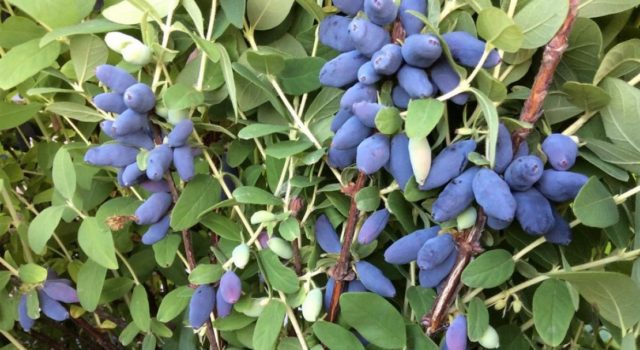
Experienced gardeners have noticed that it is better for a good harvest if the honeysuckle grows not in one row, but in a group
Why does honeysuckle grow poorly?
An unpretentious and cold-resistant culture is popular in the middle lane, as an early fruit and berry shrub. Now many varieties of garden honeysuckle with different characteristics have been bred, which significantly expands the area of its distribution. At the same time, the species is considered a fairly new crop, all diseases and pests that can significantly slow down the development of the bush and reduce productivity have not yet been studied.
If edible honeysuckle grows poorly, several factors may be the cause:
- wrong landing site;
- unsuitable soil in composition and structure;
- planting a single bush or a group of plants of the same variety;
- lack of proper crop care;
- attempts to grow a cold-resistant crop originating from the Far East in southern regions with a warm winter period;
- damage to the plant by birds, diseases or insects.
Popular problems why the honeysuckle bush grows poorly
Hardy fruit and berry shrub, falling into unsuitable conditions, grows with a noticeable lag. Gardeners analyze how well they meet agronomic requirements and define new tasks in the care.
Purchase of fruitful varieties
The yield, size, consistency and flavor of honeysuckle berries vary by cultivar. Their numbers have increased significantly in recent years. A feature of the new cultivars bred for the middle zone and other regions is the absence of berry shedding. Fruits of various flavors - dessert, sweet and sour or with bitterness.
Varietal variety
Honeysuckle is a cross-pollinated crop and gives a good harvest if 4-7 bushes of different varieties grow nearby on the site. An important condition for setting fruit is the presence of pollinating insects, more often bumblebees and bees. Berries are sprayed at the beginning of flowering with a sweet solution: 2 tbsp. l. sugar or honey is diluted in 10 liters of water and sprayed on the bushes, attracting insects.
Site selection
The development of honeysuckle depends on the location. The shrub grows and bears fruit in an area open to sunlight and protected from constant harsh winds. Even partial shade affects yields in areas with short and cool summers, since fewer reproductive buds are formed.
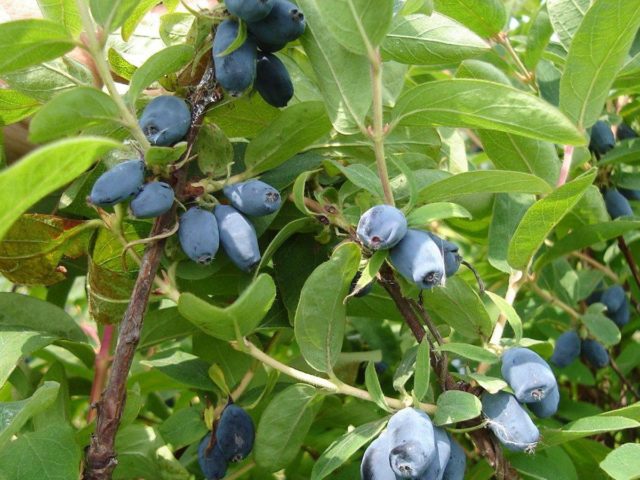
The berries of the famous varieties Blue Bird and Blue Spindle, which have been growing in gardens for a long time, often crumble
An unpretentious shrub grows on several types of soil. The following characteristics are mandatory for the soil:
- slightly acidic;
- well structured - loose and light;
- fertile.
Honeysuckle can tolerate short-term stagnation of water, but does not grow in wetlands.
Care
The trunk circle of honeysuckle is mulched, protecting the bush from weeds and retaining moisture. In hot May and June, if it is noticeable that the honeysuckle does not grow up, water it 4-6 times with 20 liters of water under the bushes.
It is necessary to feed, which for honeysuckle is done every 3-4 years in the spring - organic matter and nitrogen fertilizers. And in August, phosphorus-potassium preparations are introduced.
Timely pruning
On fertile soil at the beginning of summer, honeysuckle very quickly and vigorously forms shoots and thickens. Every year, an old bush over 5 years old is thinned out, completely removing the oldest trunks. Young shoots are left, fruit buds are created on them for the next season. After planting, only sanitary pruning is carried out.
Planting zoned plants
Gardeners noticed that garden honeysuckle grows poorly in the south. Many varieties bred for regions with long frosty winters soon die in the southern regions. During the thaw, honeysuckle quickly responds to an increase in temperature, buds wake up, which, after the return of frost or cold rains turning into ice, die. In the southern regions, zoned species of honeysuckle are grown with a long dormant period.
In the central and north-western regions, fruitful varieties created by scientists on the basis of the institute in Michurinsk, as well as bred in the Leningrad region, grow well. In the Volga region, zoned honeysuckle is distributed from a nursery in the Nizhny Novgorod region, which bears fruit with large berries. Among the Ural summer residents, varieties of the Chelyabinsk Fruit and Vegetable Station are popular. Siberian gardeners grow seedlings from nurseries in the Krasnoyarsk Territory and the Far East.
Protection from pests and diseases
Among the pests of culture, false shield and goldfish are often called. The overwintered larvae of the pseudo-shield feed on young leaves and tops of the shoots and leave behind honeydew. Spores of various fungi, especially soot, settle on sticky leaf blades. In damaged leaves, nutrition is disturbed, which negatively affects the plant. The branches become brittle, the bushes do not grow, they gradually dry out.
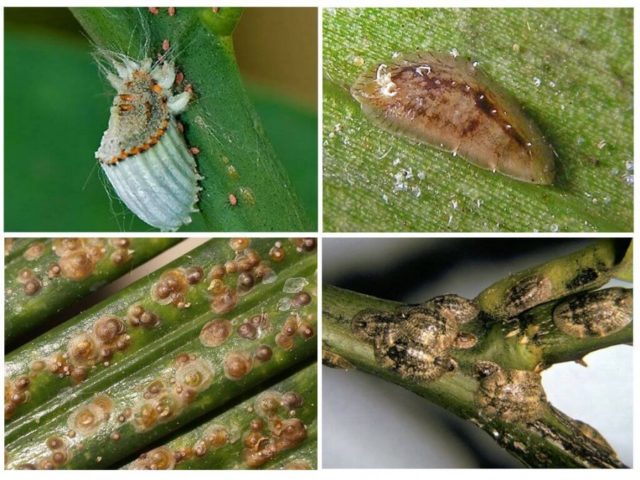
For the winter, false shields remain on the bark of plants.
Another pest of shrubs is goldfish. The insect lays eggs in young stems, the larvae feed and grow inside the shoot. Because of this, wilting of leaves is observed, then drying out of all apical shoots. There are no effective ways against an insect. The peak of their development falls on the fruiting of the crop, when it is undesirable to spray the plants. Damaged shoots are removed, moreover, capturing most of the trunk.
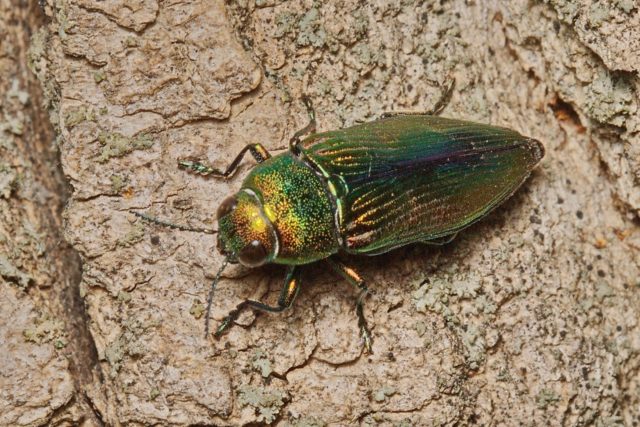
Malignant pest of honeysuckle - golden brown gold beetle
What to do if honeysuckle does not grow
Having determined the cause of the weak development of the plant, they select solutions to the problem:
- several carefully selected new varieties are planted to a single bush;
- if the bush grows poorly in the wrongly selected area, it is easy to transplant, because the roots of the culture are fibrous, superficial, quickly take root;
- care includes regular watering and feeding when honeysuckle does not grow well in spring;
- near-stem circles mulch if the bush grows in a sunny place;
- By removing fallen leaves and spraying branches and trunks with fungicides, they prevent the development of diseases and insects.
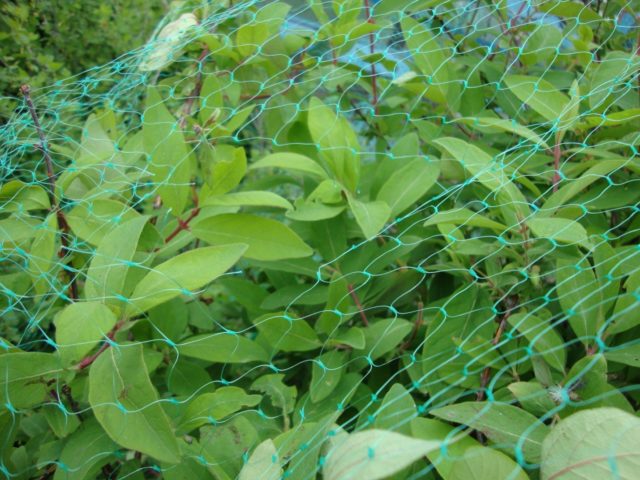
From birds that peck not only berries, but also buds in winter or spring, because of which the shoots do not grow well, they install fine-mesh nets
Conclusion
There are several reasons why honeysuckle does not grow on the site. An incorrectly planted bush is moved, new productive varieties are added, and pollination is provided. A well-groomed plant will delight with early berries.








